---------------------------------------------------------------------------------------------------------------------
Author's Statement for Transparency and Disclosure
The test sample/s featured in this article have been provided for technical testing and review by the manufacturer. Test samples are retained by the reviewer following publication of the completed review for the purposes of long term testing and product comparisons.
All output figures and test results published in this review are the sole work of the reviewer, and are carried out independently and without bias. Test results are reported as found, with no embellishments or alteration. Though best endeavours are made to maintain the accuracy of test equipment, the accuracy of these results is not guaranteed and is subject to the test equipment functioning correctly.
----------------------------------------------------------------------------------------------------------------------
Author's Statement for Transparency and Disclosure
The test sample/s featured in this article have been provided for technical testing and review by the manufacturer. Test samples are retained by the reviewer following publication of the completed review for the purposes of long term testing and product comparisons.
All output figures and test results published in this review are the sole work of the reviewer, and are carried out independently and without bias. Test results are reported as found, with no embellishments or alteration. Though best endeavours are made to maintain the accuracy of test equipment, the accuracy of these results is not guaranteed and is subject to the test equipment functioning correctly.
----------------------------------------------------------------------------------------------------------------------
The latest member of the Tiny Monster family, the TM16 is designed as a high power, extended range, compact search light.
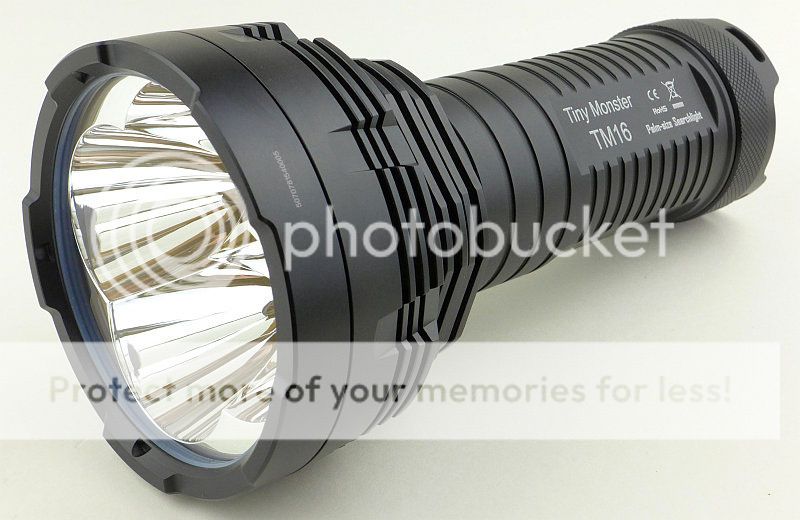
Taking a more detailed look:
Standard NITECORE TM series packaging is used.
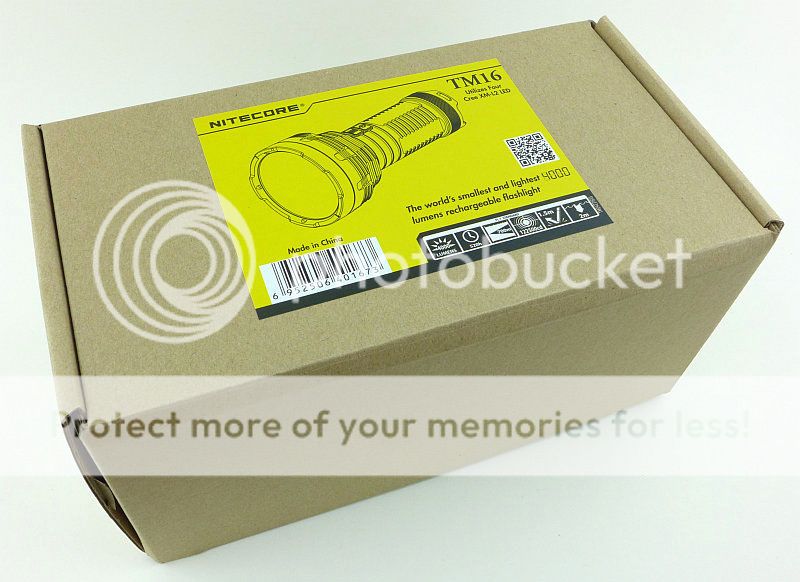
A closed-cell foam liner is used.
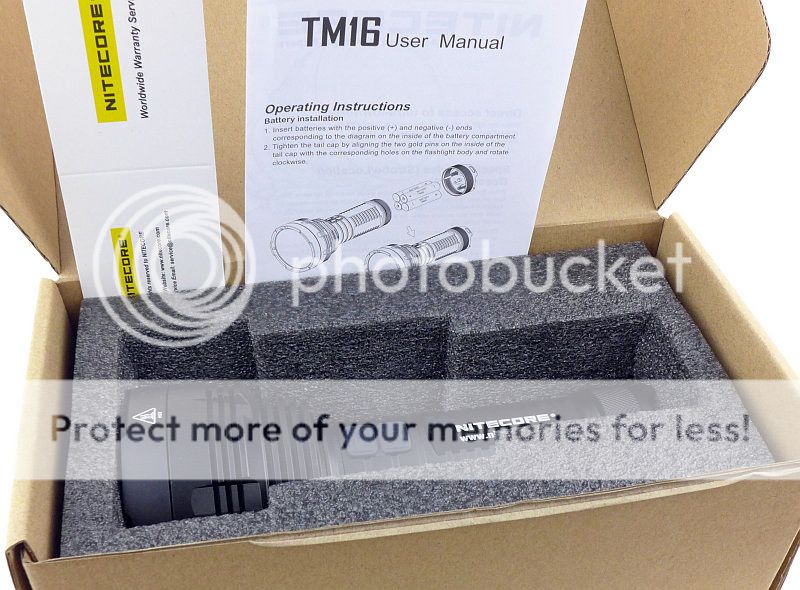
The TM16 comes with spare O-rings, instructions, a lanyard and a thin cord (which I believe is used to assist in fitting the lanyard through a hole in the tail-cap).
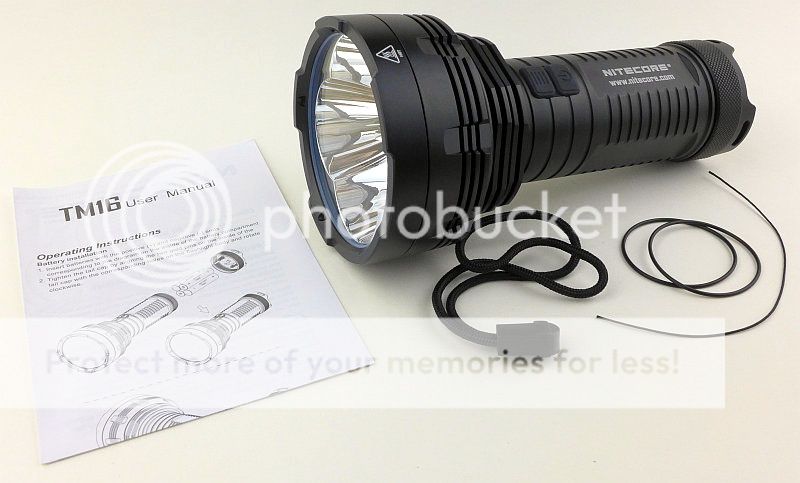
The TM16.

Taking our first look into that compound reflector.
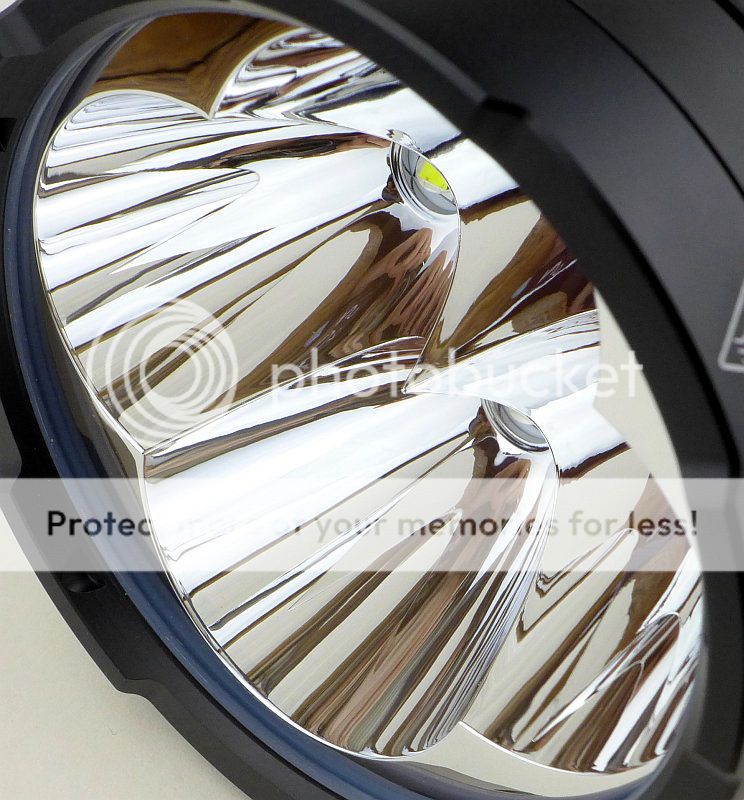
There are a set of cooling fins machined into the base of the TM16's head.
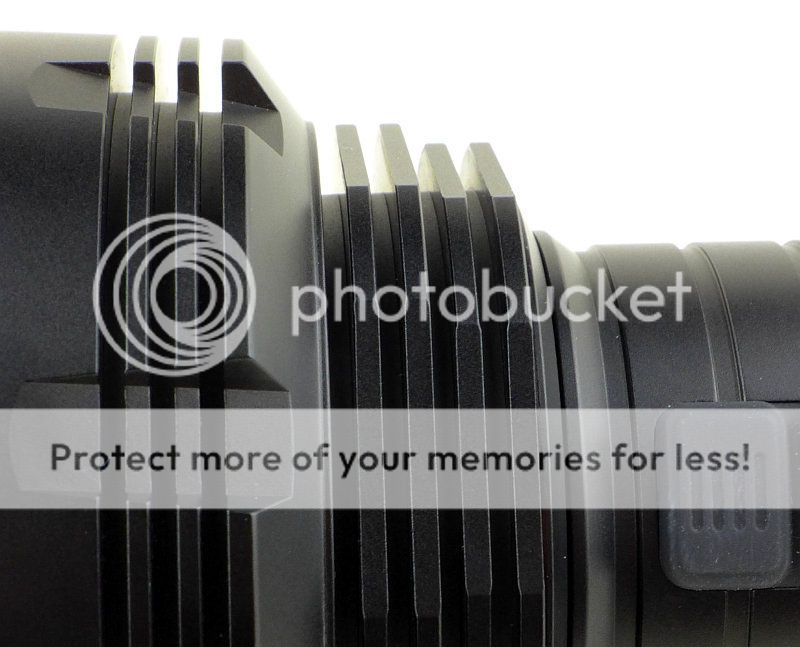
Looking from the rear of theTM16.

In the tail-cap there is a threaded socket for a standard tripod screw.
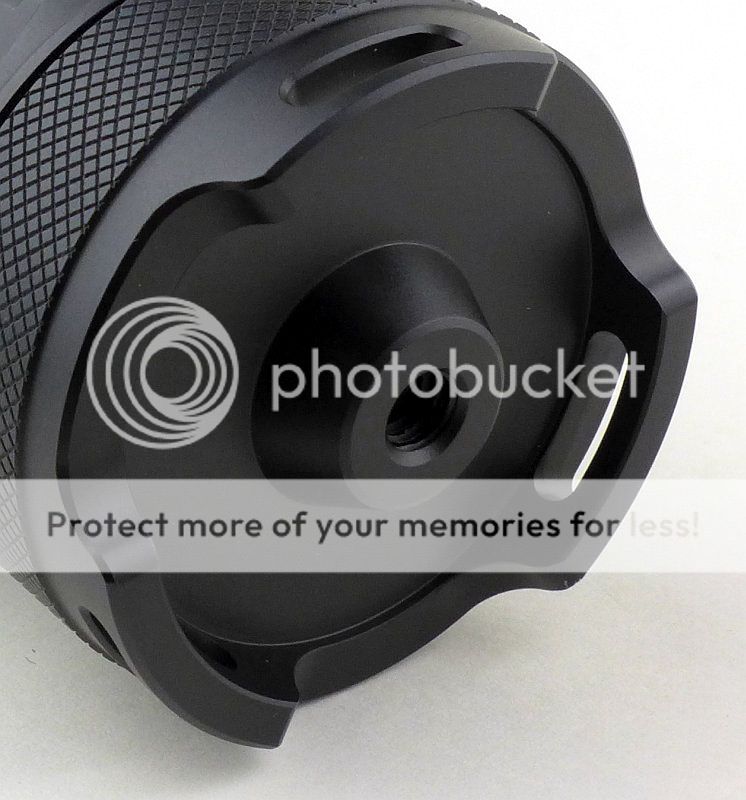
For a multi-emitter light the individual reflectors are relatively deep.
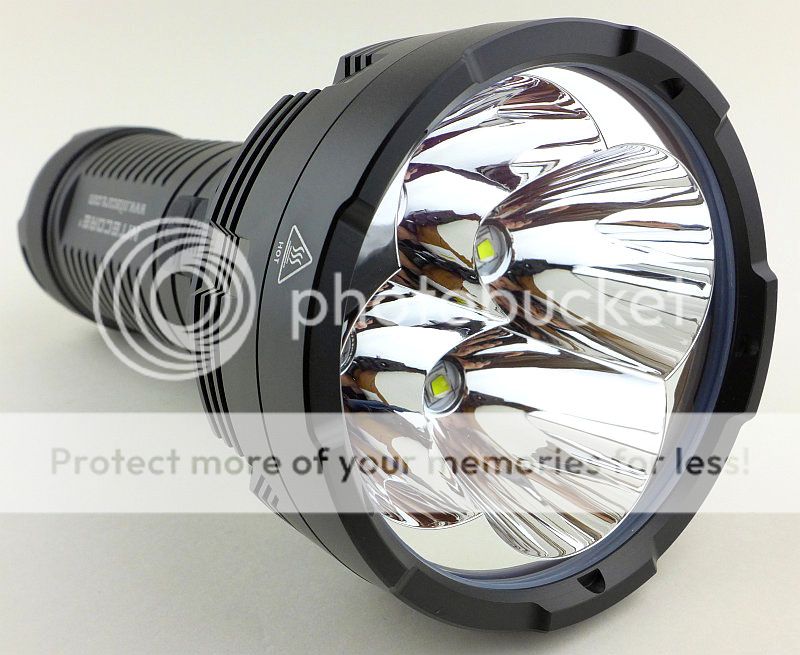
Using the same system employed in several NITECORE lights, the TM16 has a rotating PCB in the tail-cap with two locator pins.
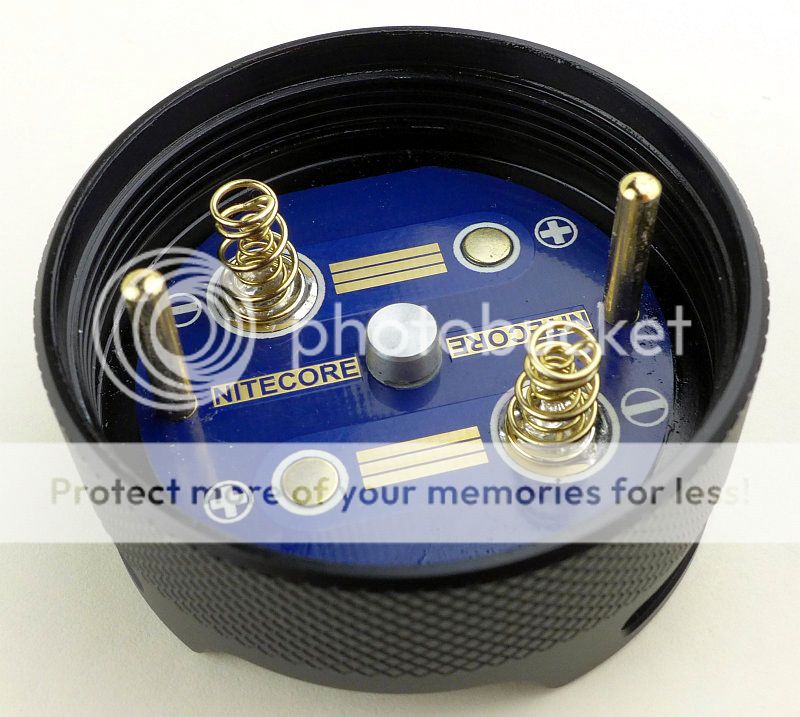
Tapezoid threads are used.
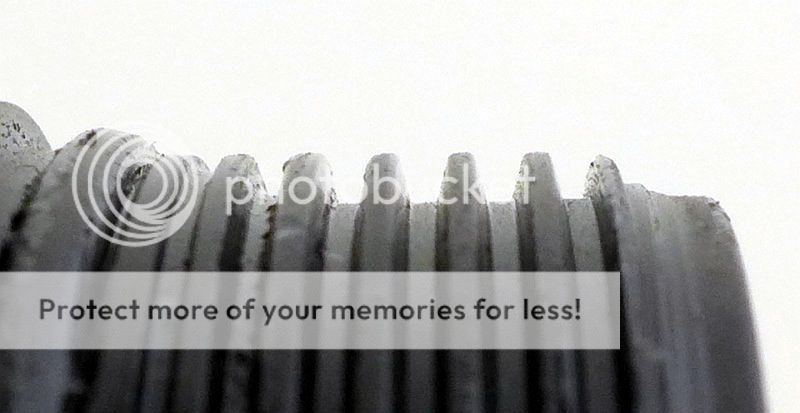
The contacts inside the battery tube.
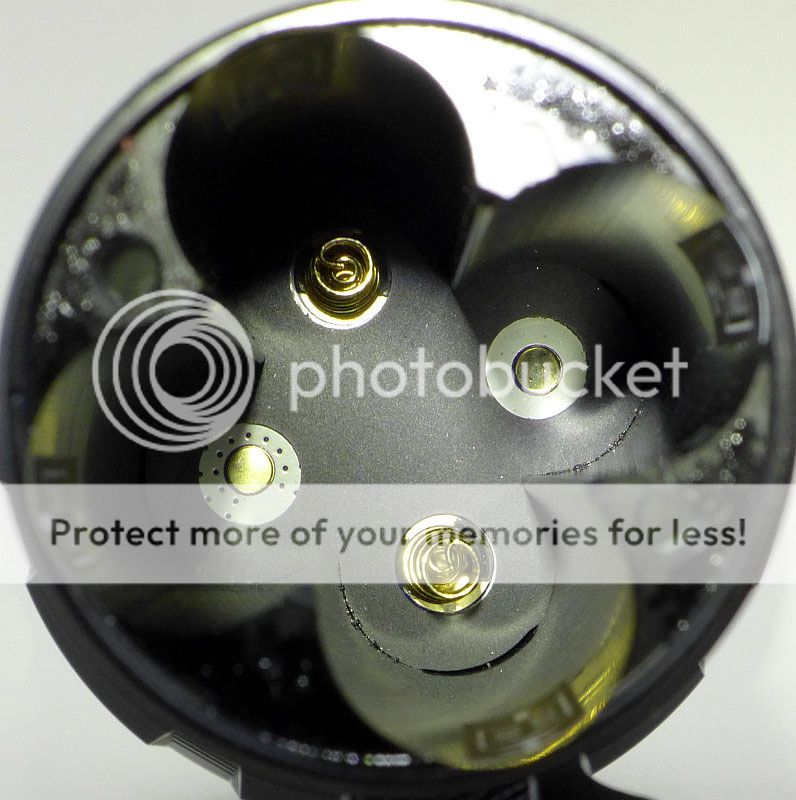
Here you can see the cell tubes and the locator pin holes. You can also see the cell polarity labels.
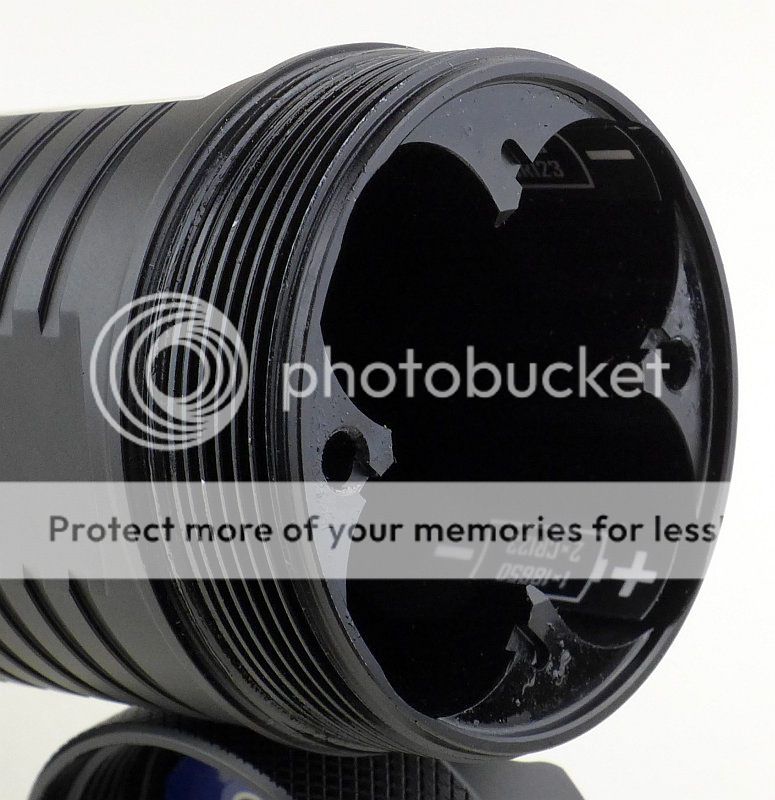
Looking straight into the compound reflector at the four XM-L2 LEDs.
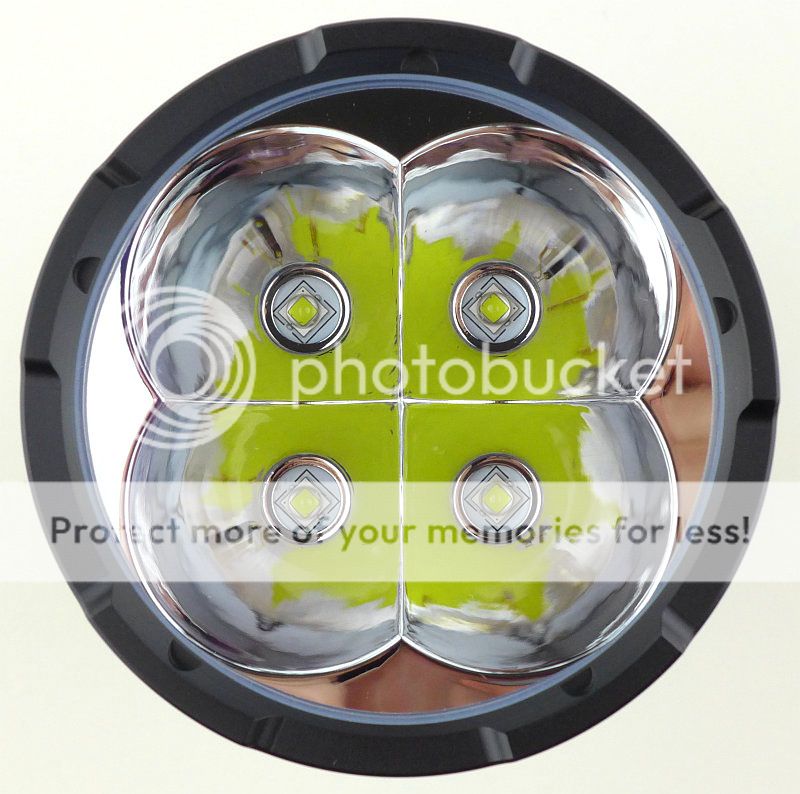
Another view of the reflector.
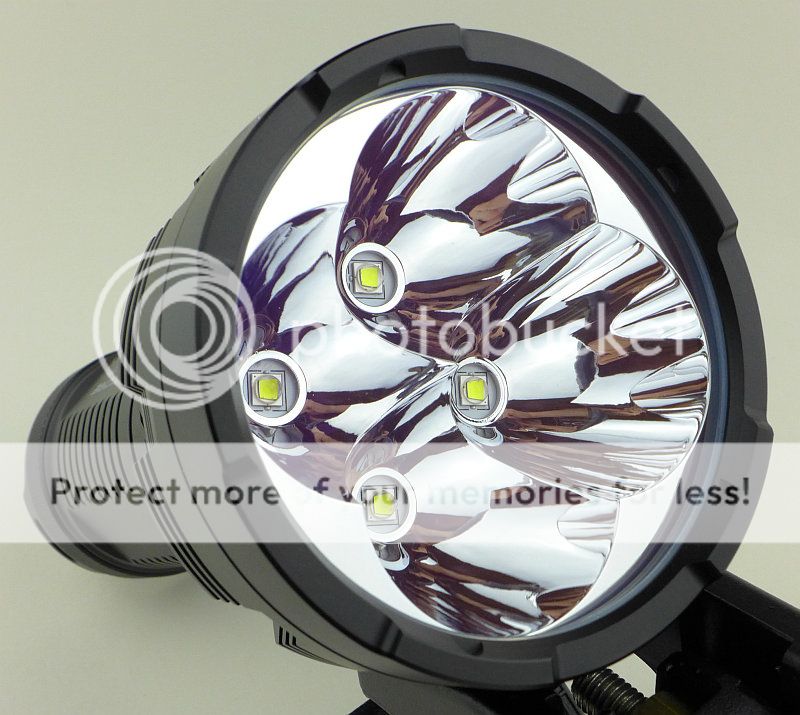
And a closer look at one LED.
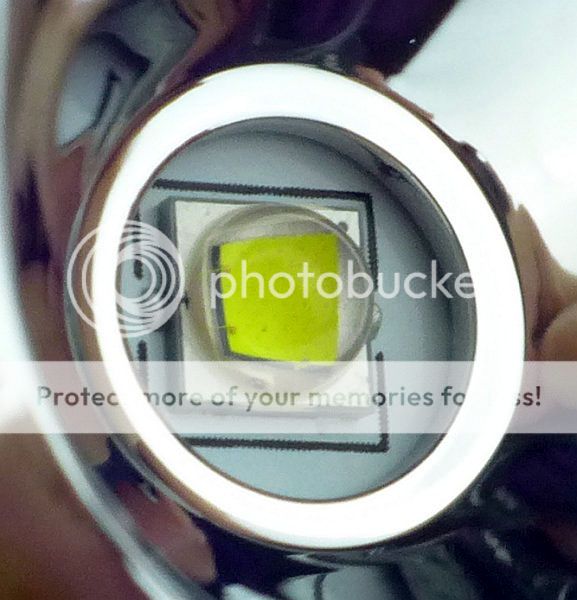
Connecting the TM16 to a tripod using the threaded hole in the tail-cap.
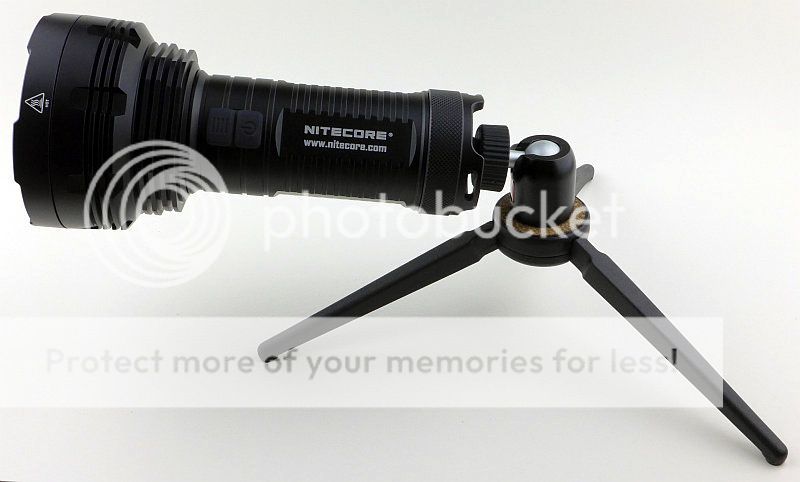
Putting the TM16 next to the Fenix TK75, you can see how the TM16's body is smaller thanks to not having a battery carrier.
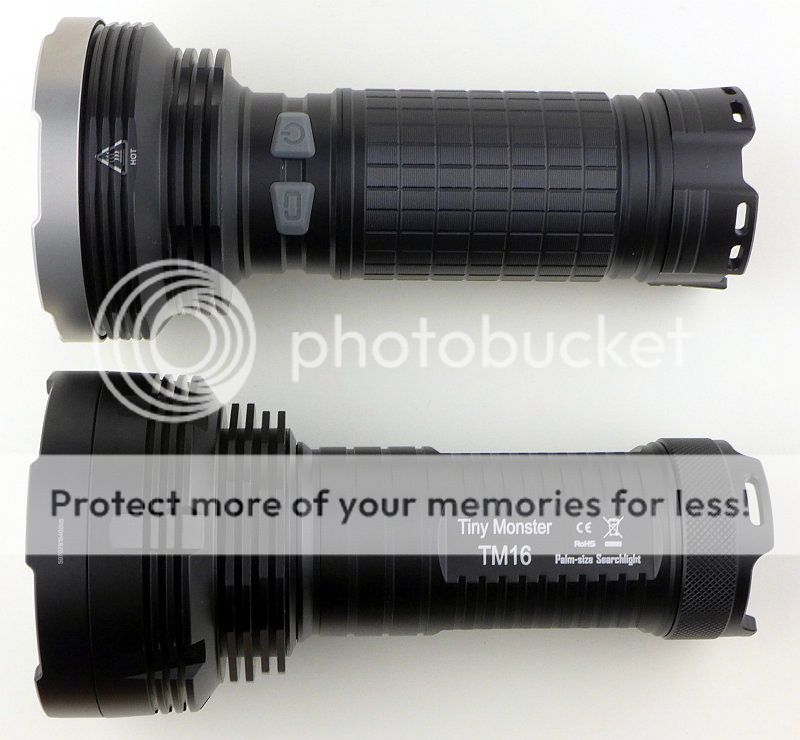
The TM16's head is slightly bigger to better house the fourth LED, but still remains a very manageable size.

The TM16 with the four cells it uses.

Cells loaded and ready to go.
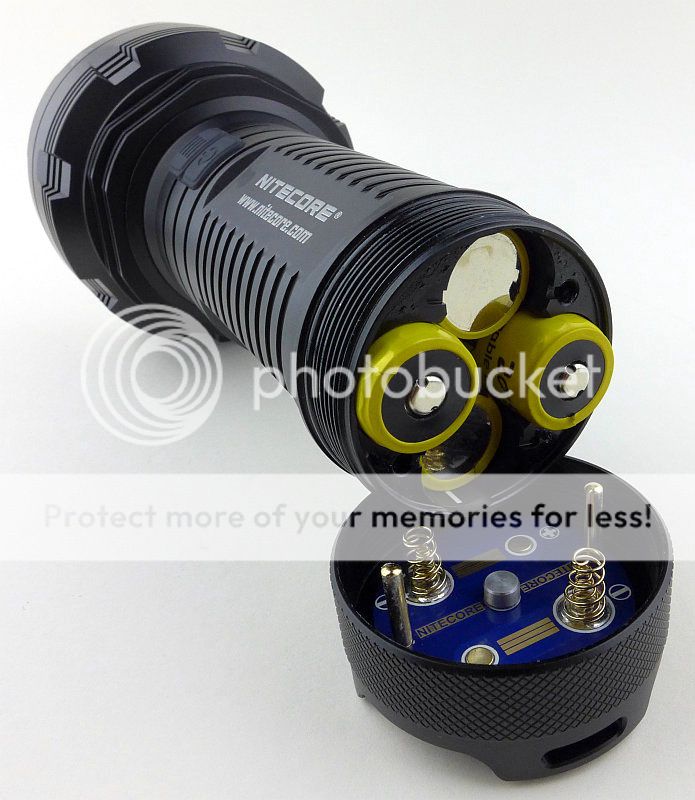
On its lowest mode 'Lower', if you look closely at the LEDs you can see the XM-L2's distinctive pattern of dots.
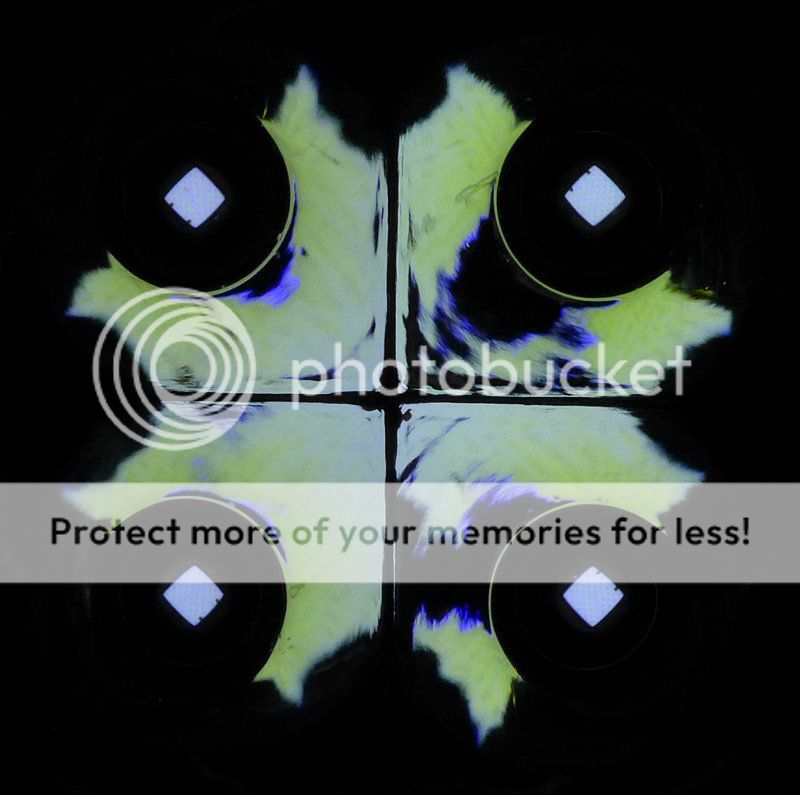
The beam
Please be careful not to judge tint based on images you see on a computer screen. Unless properly calibrated, the screen itself will change the perceived tint.
The indoor beamshot is intended to give an idea of the beam shape/quality rather than tint. All beamshots are taken using daylight white balance. The woodwork (stairs and skirting) are painted Farrow & Ball "Off-White", and the walls are a light sandy colour called 'String' again by Farrow & Ball. I don't actually have a 'white wall' in the house to use for this, and the wife won't have one!
Starting indoors, as expected with a compound reflector, the spill is flower shaped, but the hotspot is well formed.

To properly show the power of the TM16's beam first we look at my reference Fenix TK41.
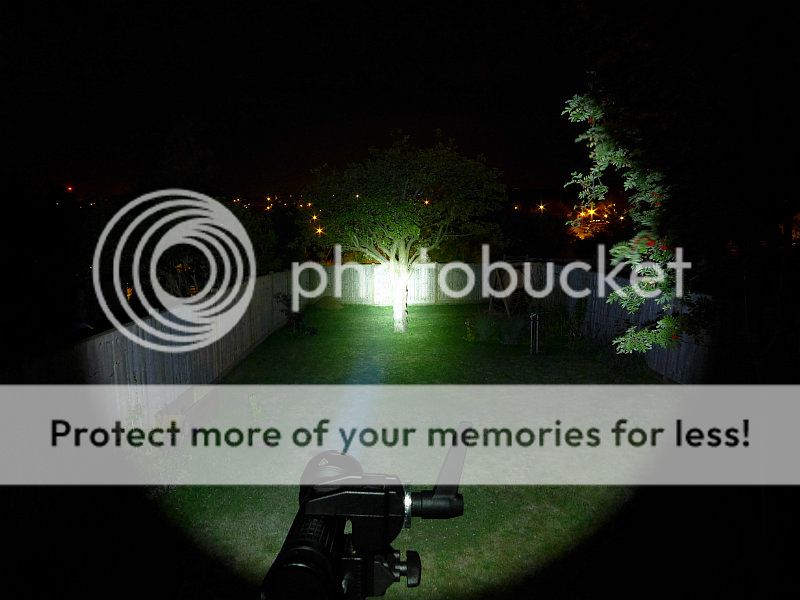
And then the TM16!
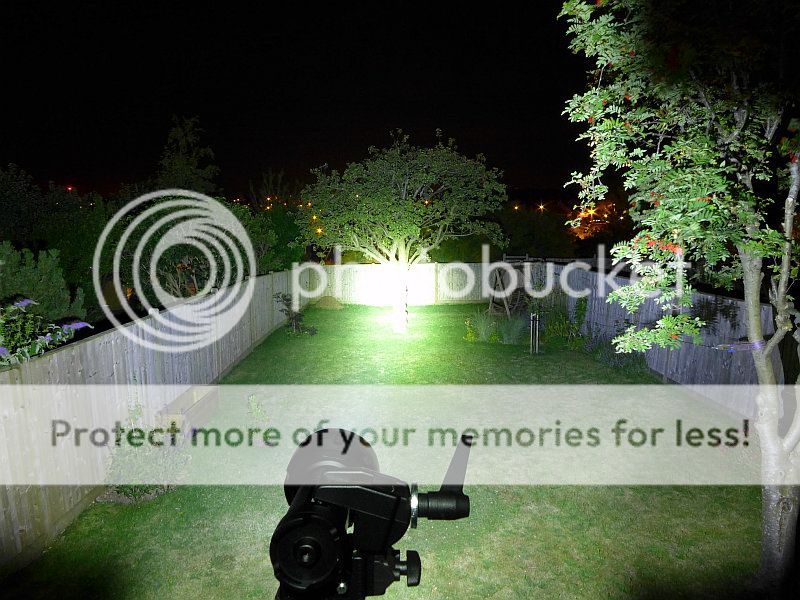
Modes and User Interface:
The TM16 has a total of five constant modes (Turbo, High, Medium, Low, Lower) and three flashing modes (Strobe, Beacon and SOS). Like many other NITECORE lights this is controlled by a dual button.
From OFF, to switch ON to the last used steady white output, briefly press the Power switch. When ON, press the Mode switch to cycle through Turbo -> Lower -> Low -> Mid -> High back to Turbo etc. To switch OFF briefly press the Power switch.
From OFF, for direct access to Lower, press and hold the Power switch for more than 1s.
From OFF, for direct access to Turbo, press and hold the Mode switch for more than 1s.
To access White flashing modes, from ON, press and hold the Mode switch for more than 1s. This will activate strobe. Press and hold the Mode switch for more than 1s again to switch to Beacon mode. Press and hold the Mode switch for more than 1s once more to activate SOS.
Once activated, pressing the mode switch briefly returns the TM16 to the previous steady mode, or a brief press of the Power switch will turn the TM16 OFF.
There is a 'Standby' mode which uses brief low power flashes of the blue switch indicator LED to act as a locator to allow you to find the TM16 in complete darkness. To activate Standby, from ON press and hold the power switch for 3s until the blue switch light comes on. Although low power, the flashes are bright enough to disturb someone's sleep. Exiting standby mode is achieved by switching on the TM16.
There is a lockout mode included. With the TM16 ON, press and hold both buttons simultaneously for 1s to enter lockout. When entering Lockout, the TM16 will turn off and give a brief flash of the main beam as you release the buttons. Like this the buttons will not turn the TM16 on. Thanks to the button design this can be done easily with the thumb. To exit Lockout press and hold both buttons simultaneously for 1s and the TM16 will turn ON in the last used mode.
Lastly when first inserting cell/s into the TM16 or briefly pressing the mode switch when OFF, the blue switch light will flash to indicate the battery voltage to 0.1V. During normal use, you can get an ideal of the charge level by pressing the mode switch from OFF and the TM16 will flashes once, twice, or three times. Three flashes indicates full power.
Batteries and output:
The runs on only 4x 18650.
To measure actual output, I built an integrating sphere. See here for more detail. The sensor registers visible light only (so Infra-Red and Ultra-Violet will not be measured).
Please note, all quoted lumen figures are from a DIY integrating sphere, and according to ANSI standards. Although every effort is made to give as accurate a result as possible, they should be taken as an estimate only. The results can be used to compare outputs in this review and others I have published.
| ___________________________________________ | ________________________________ | ________________________________ |
| NITECORE TM16 using NL189 3400mAh cells | I.S. measured ANSI output Lumens | PWM frequency or Strobe frequency (Hz) |
| ___________________________________________ | ________________________________ | ________________________________ |
| Turbo | 3645 | 0 |
| High | 1869 | 0 |
| Medium | 666 | 0 |
| Low | 253 | 0 |
| Lower | 5 | 0 |
| Strobe | 907 | 18.5 |
| Beacon | Not measured | 0.5 |
* Beacon and Strobe output measurements are only estimates as the brief flashes make it difficult to capture the actual output value.
Peak Beam intensity measured 114000lx @1m giving a beam range of 675m.
There is parasitic drain. As with some other NITECORE 4x18650 lights, the drain is not the same for both pairs.
Drain for Pair A (closest to the switch) is 131uA. This drain would fully deplete the cells in 2.96 years.
Drain for Pair B is 70uA. This drain would fully deplete the cells in 5.54 years.
To completely stop the drain the tail-cap must be almost fully removed, so it would be better to remove the cells if the TM16 is used as a standby light for more than a few months.
There was no timed step down during the output test and there was also no drop to a lower level with the TM16 instead taking as much as it could from the cells.
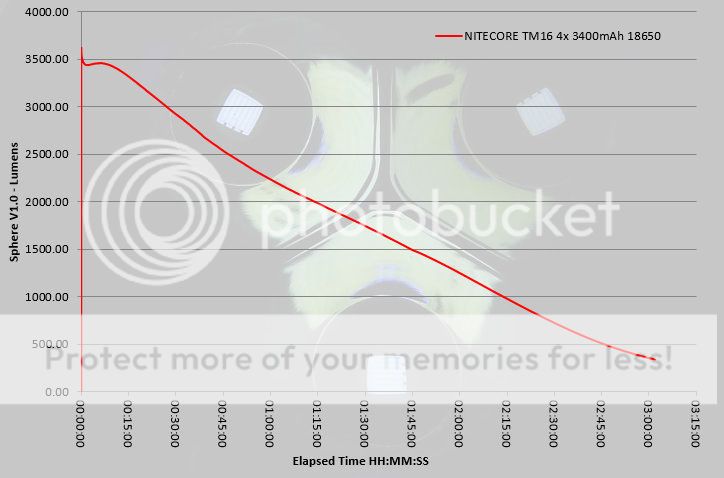
Troubleshooting
This is a new section I am adding to mention any minor niggles I came across during testing, in case the information helps anyone else.
No issues were encountered during testing.
As per the description of this section, this information is provided in case anyone else finds a similar 'issue' that might be fixed in the same way.
The TM16 in use
I wanted to start by addressing something I heard about, as it is a potential safety concern, but I have not been able to replicate this.
It has been reported elsewhere that with all 4 cells fitted, it is possible to misalign the locator pins and put them into the battery tube (instead of the locator sockets), and still be able to screw the tail-cap on. If this happens you will push the pins into the bottom of two cells damaging them badly. However I have tried to do this, and when the pins are misaligned, the threads do not catch and start. Perhaps with shorter cells this might be possible, but I could not recreate this.
Moving onto the TM16 in real use:
There is a definite benefit in the battery tube design allowing it to be narrower than many other 4x18650 lights. Size and balance make it comfortable to hold.
You need to be careful inserting the cells as the top of each cell channel has a sharp enough corner to damage the cell wrap.
Side switches are generally the most comfortable to use (unless your requirement is for an over-hand tactical grip) making the TM16 very ergonomic to use. The dual button switch works very well, right up to the point you put gloves on. Unlike NITECORE's EC4 which has a raised ridge between the buttons that gives tactile feedback even with gloves on, the TM16's two buttons are not separated like this. A pity as this simple change would make a big difference.
The easy direct access (without gloves) to Lower and Turbo is a great feature of the NITECORE dual button interface.
As well as its ultimate high power output, the TM16 has a very useful 'Lower' mode at 5lm. This is often left out of high power lights, but is a really important addition.
Though I've yet to use it practically, I'm glad to have the ability to tripod mount the TM16, as it allows you to use the TM16 as a fixed task light.
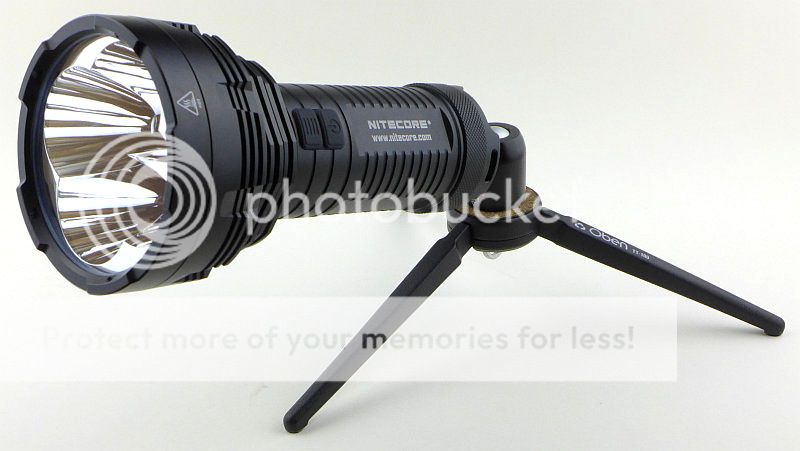
And the TM16 where it counts, outside at longer ranges. Despite its compound reflector, the TM16 manages to push some serious lux out. Though not brilliantly shown in this photo, the distant tree (approx. 300m) is lit up in the TM16's hotspot.

In this photo a closer tree (approx. 100m) is lit up and the telegraph pole in front of it shines brightly.
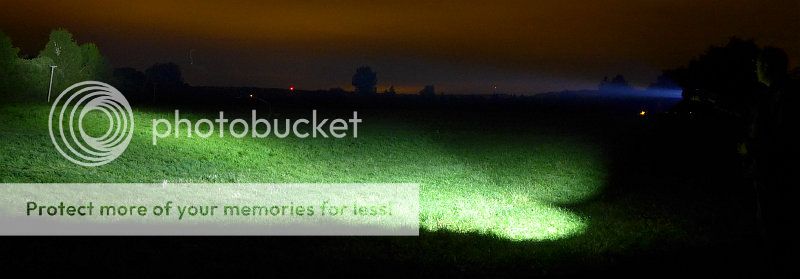
The TM16 gives you power and range in a relatively compact light.
Review Summary
| _______________________________________________ | _______________________________________________ |
| Things I like | What doesn't work so well for me |
| _______________________________________________ | _______________________________________________ |
| 114000lx @1m giving a beam range of 675m | Turbo not regulated |
| Compact battery tube for a 4x18650 light | Switch 'feel' lost with gloves |
| Direct access to Turbo and Lower modes | No holster provided |
| Useful tripod mount | Battery tube can damage cell wrap due to sharp corners |
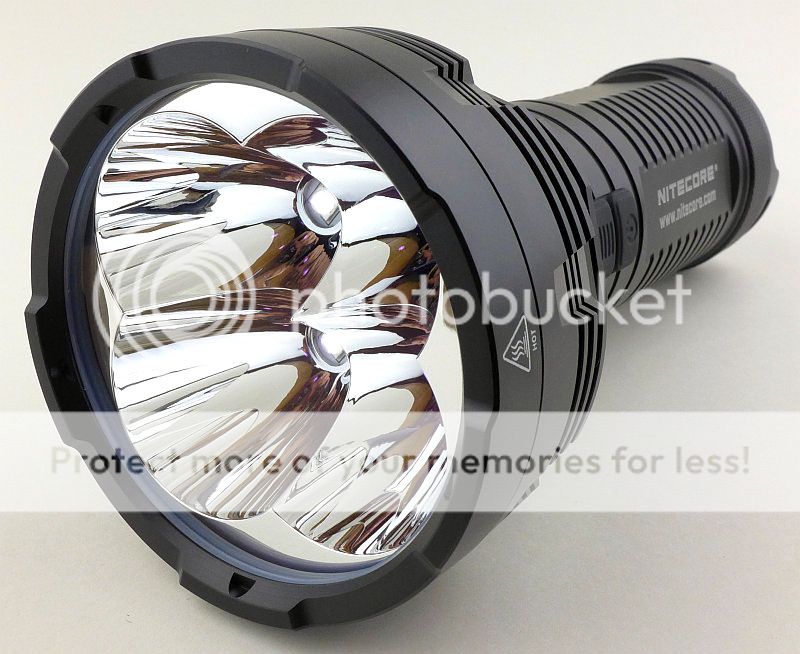
If you enjoyed my reviews, please remember to 'Like' me on Facebook and follow me on Twitter @Subwoofer_CPF
to get all the latest updates and news.
You can also find exclusive insights on Instagram and Pinterest





to get all the latest updates and news.
You can also find exclusive insights on Instagram and Pinterest

Last edited:

